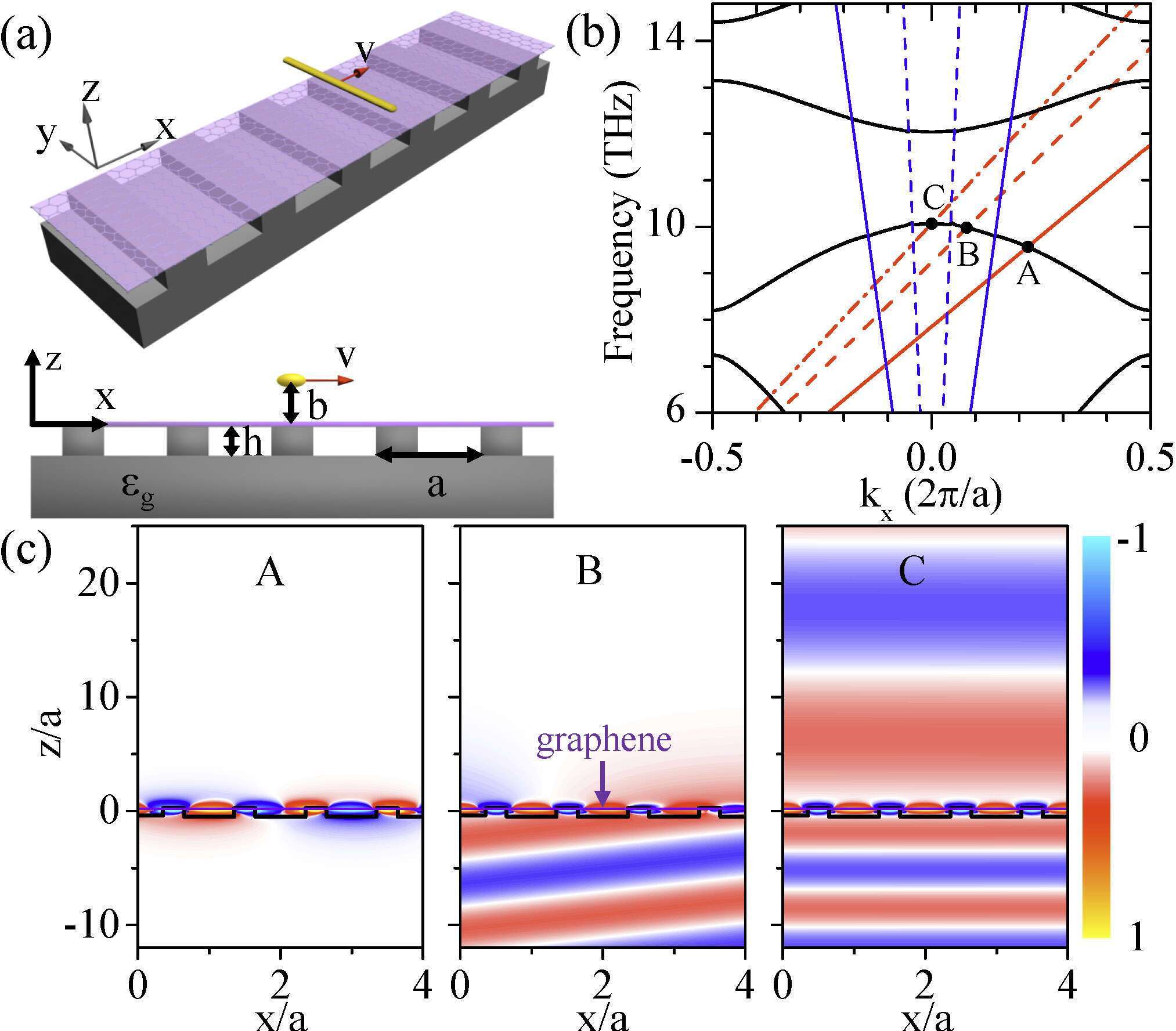
Graphene on a Dielectric Grating: Plasmon Band Structures and Terahertz Radiations
As a two-dimensional material, graphene shows many unique physical properties. In particular, gated or doped graphene can support plasmons, making it a promising plasmonic material in the terahertz regime.
In this talk, we will show theoretically that a monolayer graphene situated on a dielectric grating possesses interesting optical properties. In particular, this structure shows interesting plasmon band structures with well-defined plasmon bands [1]. We further show that intense terahertz radiations can be generated for a low-energy (~ 1 keV) electron bunch moving atop the structure. The underlying physics lies in the fact that the moving electron bunch can efficiently excite plasmons in the graphene sheet, and the plasmons in turn can be transformed into free-space radiations if the phase-matching condition is satisfied. We find that the radiation intensity is strongly enhanced around the excitation frequencies of plasmons due to their deep subwavelength confinement. Moreover, the radiation frequency range can be tuned over a wide spectral range simply by changing the Fermi level of the graphene sheet, attaining tunable terahertz radiations.

Figure caption: (a) An electron bunch moving atop a graphene sheet on a dielectric grating. (b) Band structure of plasmons of the structure. (c) Electric-field distributions for modes A, B, and C marked in (b) induced by the moving electron bunch.
References:
[1] T. R. Zhan, et al., Phys. Rev. B 86, 165416 (2012).
[2] T. R. Zhan, et al., Phys. Rev. B 89, 245434 (2014).
Powered by Eventact EMS